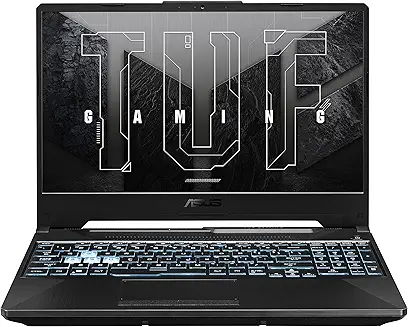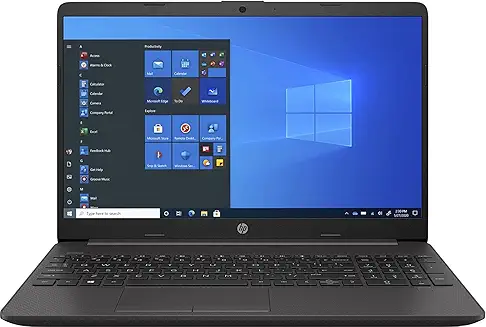2023 Best Laptops in India – Top Laptops Ranked & Reviewed
Last Updated April 02, 2025
Top 10 Laptops List in April 2025 (Best Laptops Overall)
Today, a laptop has become a necessary gadget for everyone, whether you are a student, working professional, or a sportsperson. Luckily, buying a laptop is much easier today than before, as the market is flooded with a wide range of options. From size to connectivity, storage, and processor, there are many things to consider before investing your money in a good laptop. Many people today prefer lightweight laptops that are easy to carry and offer different classes and good multitasking capabilities. Even if you have a low budget, don’t worry, because this article will help you find the best laptop in an easy manner.
Laptop Buying Guide – Important factors to consider before buying a new laptop
Laptop Size
When we talk about laptops, the first thing that comes to mind is the size. It is the size that sets laptops apart from desktop computers. If portability is your priority, consider a small-screen laptop that is light and sleek. A recommended option is an 11-13 inch laptop that weighs less than three pounds. If you frequently travel, check out the Dell XPS 13 (2018), which has a good battery life.
Screen
If you are prone to headaches, choose a screen size that is comfortable for you. Touchscreen laptops are available these days, but they can be super glossy and cause excessive reflection, which is not good for people with headache problems. Modern laptop screens come with a picture-in-picture feature that allows you to watch two displays on a single screen. Look for a laptop with a 1920 x 1080-pixel resolution (full HD) screen. A larger screen allows you to see everything without having to scroll too much.
Form Factor
Form factor is an important parameter in computers, referring to the full configuration, size, and physical arrangement of the computer. Laptops have their own form factors, typically being “clamshell” form and rectangular. Form factor is a key consideration when choosing a laptop. There are different types of laptops available in the market. If you prefer portability, consider a clamshell laptop with a 13- or 15-inch screen. If you need something light, look for Ultrabook laptops that weigh three pounds or less.
There are also 2-in-1 laptops available, which allow you to turn the screen all the way around and use them as tablets. These laptops are more expensive but offer excellent portability. If you are on a budget, Chromebooks are a good option. They are affordable laptops that are virus-free and can handle bumps and breakers while on the go.
CPU
The processor is the most critical component when choosing a laptop, as it is considered the brain of the computer. It handles everything from pressing a key to opening files and running software applications. If you primarily use your laptop for web surfing, writing, or checking emails, a dual-core processor is sufficient. Dual-core processors allow you to open multiple windows at once and are great for multitasking, but they may not be powerful enough for gaming or photo editing.
If you don’t want to compromise on CPU performance, consider an Intel Core i7 CPU. If you are into music or photo editing, a multi-core processor is recommended. Most music composers and photographers use laptops with multi-core processors. Remember, more cores mean better performance.
RAM
RAM allows you to work with data at a time. For a Windows PC, 4GB of RAM is usually sufficient for tasks like web browsing, checking emails, watching movies online, and listening to music. If you want to do photo/video editing or if you are a hardcore gamer, look for a laptop with 8GB of RAM or more. Keep in mind that more RAM will drain the battery faster, so if battery life is a concern, go for less RAM.
Storage
There are multiple storage options available today, including microchips, SD cards, flash drives, and external hard drives. Choose a hard drive with high-capacity storage if you plan to store a lot of movies, songs, and games. HDDs (Hard Disk Drives) are less expensive but are good for processing large files. They can be a bit noisy and consume more power. Solid-state drives (SSDs) are more common nowadays. They are faster, consume less power, and offer better performance and reliability compared to HDDs. They are also relatively low priced.
Connectivity
Connectivity is key in today’s world. Laptops come with multiple connectivity options, from Bluetooth to thumb drives. Modern laptops have multiple USB drives, built-in Micro SD card slots, and a 3.5 mm audio jack, offering great choices for connectivity. It is recommended to look for a laptop with USB 3.0 ports, which can be used to connect hard drives for backups. SD card slots are useful for transferring photos directly from your DSLR camera to your laptop.
Battery Life
Battery life is an essential factor to consider, especially if you plan to use your laptop while traveling or in situations where access to power outlets is limited. Look for laptops with longer battery life, typically measured in hours. Keep in mind that battery life can vary depending on factors such as screen brightness, running applications, and the laptop’s power management settings. Reading reviews and comparing the stated battery life of different models can help you make an informed decision.
Graphics Card
If you’re a gamer, video editor, or work with graphic-intensive applications, the graphics card becomes crucial. A dedicated graphics card provides better performance and smoother gameplay compared to integrated graphics found in the processor. Look for laptops with dedicated graphics cards from reputable manufacturers such as NVIDIA or AMD. Consider the VRAM (Video RAM) capacity and the specific model of the graphics card to ensure it meets the requirements of the applications or games you intend to use.
Keyboard and Touchpad
Since you’ll be interacting with your laptop through the keyboard and touchpad, it’s important to consider their quality and comfort. Look for keyboards with good key travel and tactile feedback, as this can make typing more enjoyable and efficient. Backlit keyboards can be beneficial if you often work in dimly lit environments. Regarding the touchpad, ensure it is responsive, accurate, and supports multi-touch gestures. Some laptops also offer precision touchpads that provide a smoother and more precise navigation experience.
Build Quality and Durability
The build quality of a laptop determines its sturdiness and ability to withstand daily use. Look for laptops made from durable materials such as aluminum, magnesium alloy, or carbon fiber. These materials provide better structural integrity and can protect against accidental bumps and knocks. Pay attention to the overall design and construction, including the hinge mechanism, as a sturdy hinge will contribute to the laptop’s longevity. Reading customer reviews and considering the laptop’s durability ratings can give you insights into its build quality.
Operating System
The operating system (OS) is the software platform that runs on your laptop and determines the user interface and software compatibility. The three primary operating systems for laptops are Windows, macOS, and Chrome OS. Windows is the most widely used and offers extensive software compatibility. macOS is exclusive to Apple laptops and is known for its user-friendly interface and seamless integration with other Apple devices.
Chrome OS, found on Chromebooks, is a lightweight and cloud-centric OS that is primarily designed for web browsing and online productivity. Consider your familiarity with different operating systems, software requirements, and personal preferences when choosing a laptop with the right OS for you.
Ports and Connectivity
Evaluate the available ports and connectivity options on the laptop. Ensure that it has the necessary ports to connect your peripherals and devices, such as USB Type-A and Type-C ports, HDMI or DisplayPort for external displays, Ethernet port for wired internet connection, and a headphone jack. Additionally, consider the presence of wireless connectivity options such as Wi-Fi and Bluetooth, which allow you to connect to the internet, wireless accessories, and other devices seamlessly. The number and type of ports required depend on your specific needs and the devices you plan to connect to your laptop.
Brand and Customer Support
Consider the reputation and customer support of the laptop brand you’re interested in. Established brands with a good track record often offer reliable products and provide better customer support, including warranty coverage and assistance in case of any issues. Research customer reviews, warranty policies, and after-sales service to gauge the brand’s reliability and customer satisfaction. Opting for a trusted brand can give you peace of mind and ensure a smoother ownership experience.
Price and Budget
Set a budget for your laptop purchase based on your financial means and requirements. Laptops come in various price ranges, and the price often correlates with the specifications, build quality, and brand reputation. Consider the features and specifications that are essential for your needs and find a balance between performance and affordability. Comparing different models and considering customer reviews and expert opinions can help you determine the best value for your budget.
Ultimately, the importance of each factor depends on your specific needs and preferences. Prioritize the aspects that are most crucial to you, whether it’s battery life for mobility, graphics performance for gaming, or build quality for durability. Careful consideration of these additional points will help you find a laptop that aligns with your requirements and offers a satisfying user experience.












